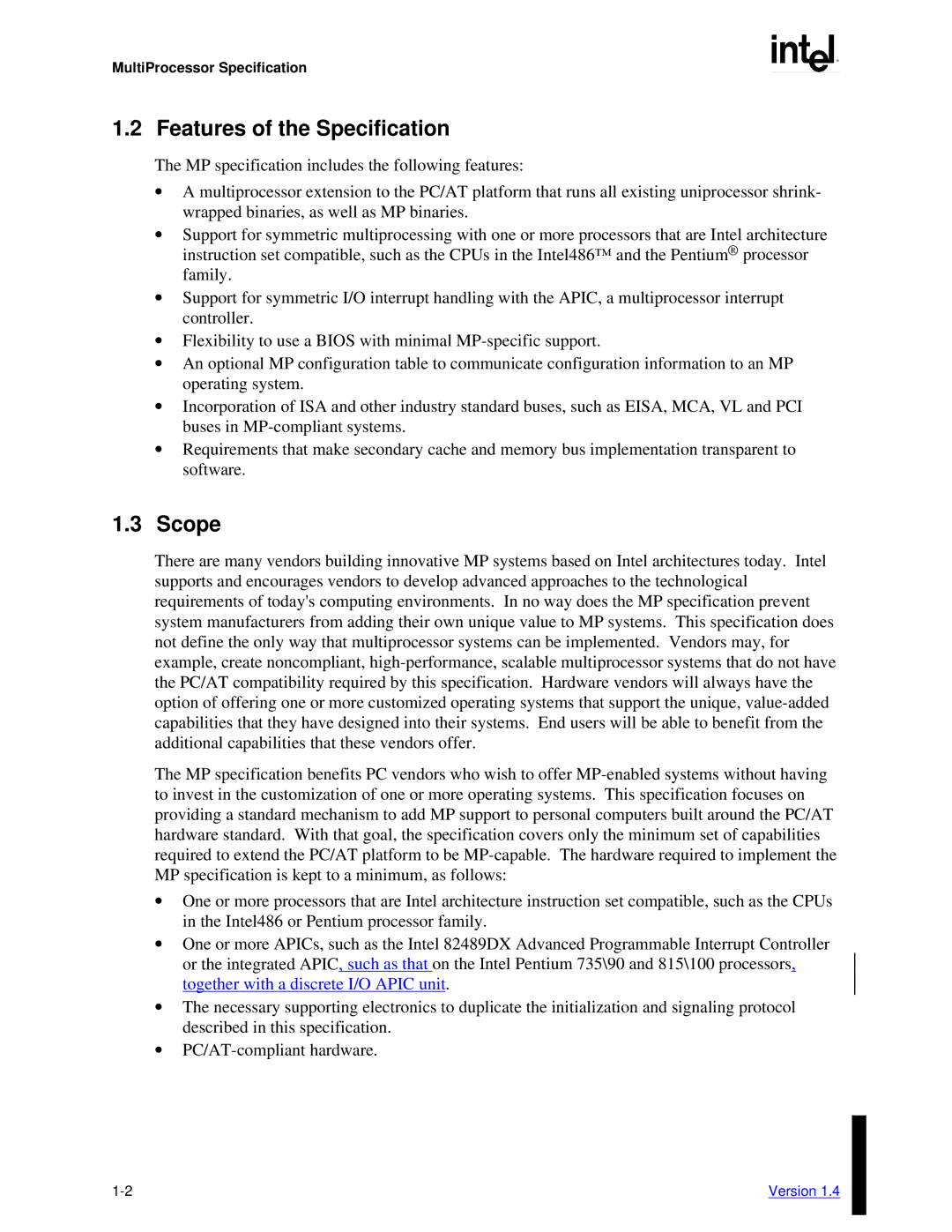
MultiProcessor Specification
1.2 Features of the Specification
The MP specification includes the following features:
∙A multiprocessor extension to the PC/AT platform that runs all existing uniprocessor shrink- wrapped binaries, as well as MP binaries.
∙Support for symmetric multiprocessing with one or more processors that are Intel architecture instruction set compatible, such as the CPUs in the Intel486™ and the Pentium ® processor family.
∙Support for symmetric I/O interrupt handling with the APIC, a multiprocessor interrupt controller.
∙Flexibility to use a BIOS with minimal
∙An optional MP configuration table to communicate configuration information to an MP operating system.
∙Incorporation of ISA and other industry standard buses, such as EISA, MCA, VL and PCI buses in
∙Requirements that make secondary cache and memory bus implementation transparent to software.
1.3Scope
There are many vendors building innovative MP systems based on Intel architectures today. Intel supports and encourages vendors to develop advanced approaches to the technological requirements of today's computing environments. In no way does the MP specification prevent system manufacturers from adding their own unique value to MP systems. This specification does not define the only way that multiprocessor systems can be implemented. Vendors may, for example, create noncompliant,
The MP specification benefits PC vendors who wish to offer
∙One or more processors that are Intel architecture instruction set compatible, such as the CPUs in the Intel486 or Pentium processor family.
∙One or more APICs, such as the Intel 82489DX Advanced Programmable Interrupt Controller or the integrated APIC, such as that on the Intel Pentium 735\90 and 815\100 processors, together with a discrete I/O APIC unit.
∙The necessary supporting electronics to duplicate the initialization and signaling protocol described in this specification.
∙
Version 1.4 |
